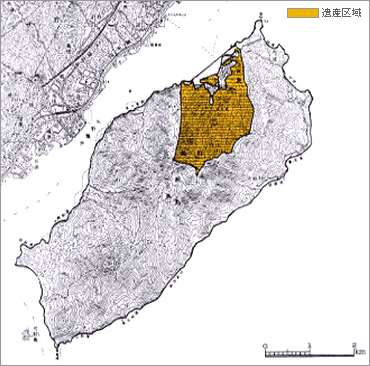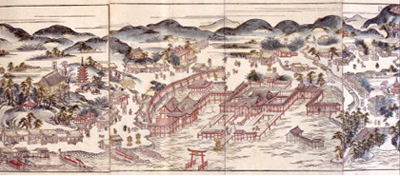The world cultural heritage | Pick up | Miyajima Tourist Association

Itsukushima Shrine creates a unique scenery with a large scheme that is unparalleled in the world, by setting the vermillion-colored shrine buildings on the sea with the Misen Forest covered with deep gree in the background.
World Heritage Itsukushima Shinto Shrine includes 17 shrine buildings including the Main Hall, Worship Hall and Prayer hall; 3 structures including Otorii Gate, the Five-Storied Pagoda and the Tahoto Pagoda. 6 buildings are designated National Treasures; 11 buildings and 3 structures are designated as Important Cultural Properties.
The buffer zone includes the area not designated a World Heritage on the whole Itsukushima Island and the ocean surface seen through form Konakiri Point in Nagahama to the north point of Mt. Suisho.
What is World Heritage ?
The World Heritage Convention (convention concerning the protection of the world culture and natural heritage) is a treaty adopted by the UNESCO General Conference in 1972 and ratified by Japan in 1992. The purpose of the convention is to recognize sites of world-class cultural and natural heritage that are mankind's common assets, and to promote cooperation among the countries of the world to protest such assets when they are threatened by damage or loss. To this end, the World Heritage Committee, made up of 21 representative of signatory countries in which they are located. A heritage site judged to have significant universal value is registered on the World Heritage List as an asset shared by humanity. The heritage sites on this World Heritage List are generally referred to as "World Heritage".
To be declared a "World Culture Heritage" site, candidates must satisfy one or more if the following six criteria.
- to represent a masterpiece of human creative genius;
- to exhibit an important interchange of human values, over a span of time or within a cultural area of the world, on developments in architecture or technology, monumental arts, town-planning or landscape design;
- to bear a unique or at least exceptional testimony to a cultural tradition or to a civilization which is living or which has disappeared;
- to be an outstanding example of a type of building, architectural or technological ensemble or landscape which illustrates (a) significant stage(s) in human history;
- to be an outstanding example of a traditional human settlement, land-use, or sea-use which is representative of a culture (or cultures), or human interaction with the environment especially when it has become vulnerable under the impact of irreversible change;
- to be directly or tangibly associated with events or living traditions, with ideas, or with beliefs, with artistic and literary works of outstanding universal significance. (The Committee considers that this criterion should preferably be used in conjunction with other criteria);
Value of Itsukushima Shrine as the World Heritage

Criterion (i): The configuration of the shrine buildings of Itsukushima-jinja presents an excellent architectural scene on the lines of the aristocratic residential style of this period. It is an outstanding work combining manmade and natural elements. The buildings exhibit great artistic and technical merit and are sited on the sea with a backdrop of impressive mountains.
Criterion (ii): The shrine buildings of Itsukushima-jinja are in the general tradition of Shinto shrine architecture in Japan and provide invaluable information for the understanding of the evolving spiritual culture of the Japanese people, namely the Japanese concept of scenic beauty. The most important aspect of Itsukushima-jinja is the setting of the shrine buildings as the central part of a trinity with the sea in the foreground and mountains in the background, recognized as a standard of beauty against which other examples of scenic beauty have come to be understood.
Criterion (iv): The buildings of Itsukushima-jinja, which through scrupulously accurate reconstructions have preserved styles from the late 12th and early 13th centuries, are outstanding examples of the ancient type of shrine architecture integrated with the surrounding landscape, the physical manifestation of humankind's worship of nature.
Criterion (vi): Japanese spiritual life is deeply rooted in ancient shintoism which is centred on polytheistic nature worship. Itsukushima-jinja provides important clues understanding this aspect of Japanese religious expression.






















